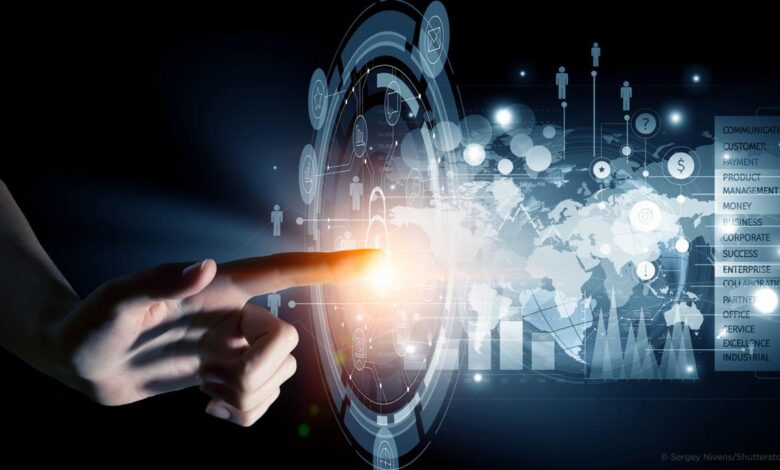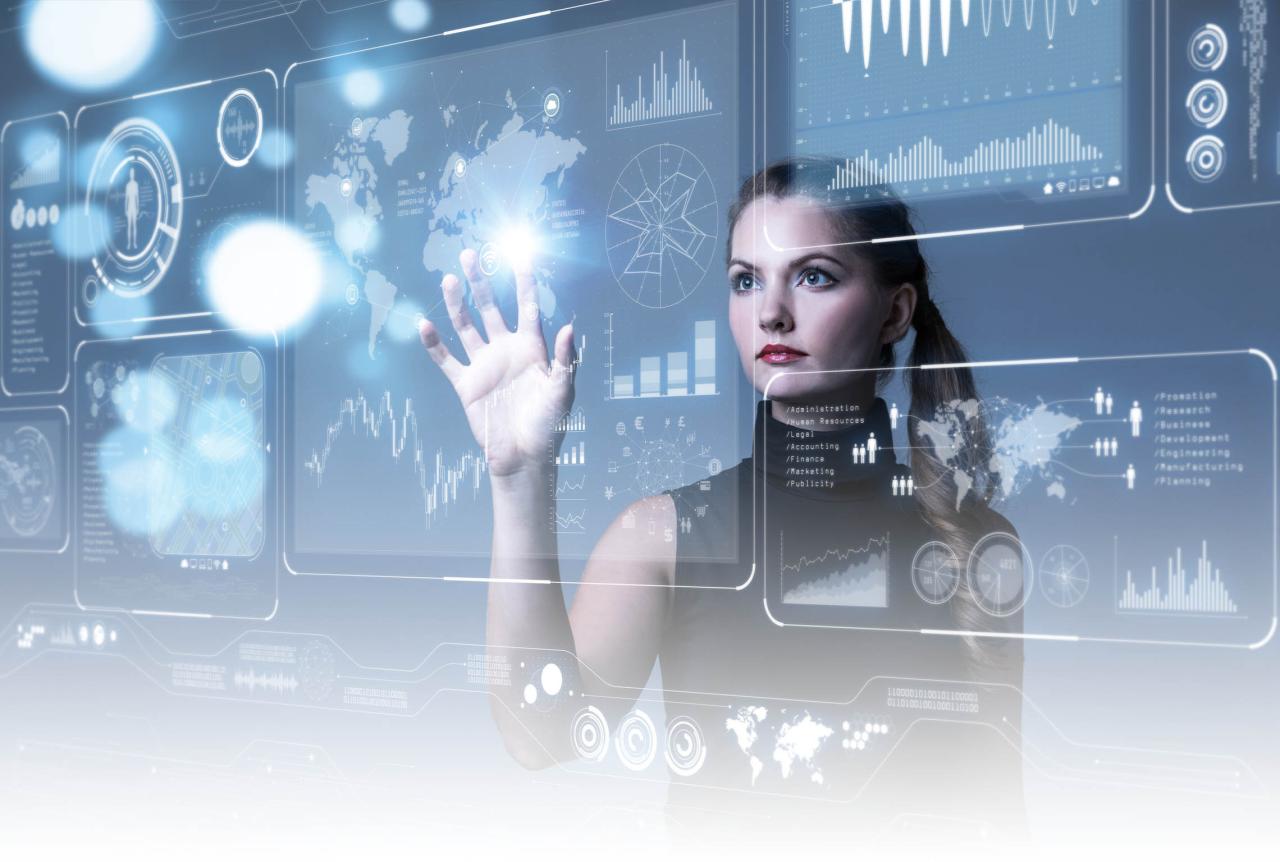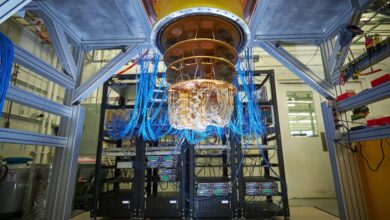Next-Gen Tech: Shaping Our Digital Future Now

The digital world we inhabit is no longer evolving at a predictable, linear pace; instead, we are experiencing an unprecedented acceleration of technological innovation that is reshaping the foundations of commerce, communication, healthcare, and daily life itself.
This period of rapid, often disruptive, change is driven by the convergence of several major fields, where advances in one area, like computing power or data processing, unlock breakthroughs in others, such as Artificial Intelligence or advanced connectivity.
To truly thrive in the twenty-first century, it’s essential not just to observe these advancements but to understand the fundamental technologies driving them, recognizing that today’s futuristic concept often becomes tomorrow’s indispensable utility.
These transformative technologies, from the subtle algorithms that personalize our feeds to the complex systems that manage global logistics, are creating what many call the Fourth Industrial Revolution, seamlessly blurring the lines between the physical, digital, and biological spheres.
For businesses, this innovation presents both immense opportunity and existential challenge, requiring continuous adaptation to leverage powerful new tools that promise unprecedented efficiency and insight, while individuals must stay informed to navigate an increasingly complex and interconnected reality.
The continuous flow of groundbreaking ideas ensures that the landscape is always shifting, making technological literacy a core skill necessary for economic relevance and personal empowerment in a world defined by digital change.
Ignoring this constant evolution is simply not an option, as the pace of innovation means that what works today may be obsolete by tomorrow, demanding a mindset of lifelong learning and technological curiosity.
The Four Pillars of Technological Transformation

The current wave of innovation is primarily built upon four foundational technology pillars, each acting as a catalyst for growth and disruption across multiple industries.
1. Artificial Intelligence and Machine Learning (AI/ML)
AI is the cognitive engine of the digital revolution, allowing systems to learn from data, recognize patterns, and make intelligent decisions without explicit, step-by-step programming.
A. Generative AI
- Large Language Models (LLMs) like the popular GPT series have revolutionized content creation, coding, and basic research by generating human-like text, summaries, and complex documents.
- Text-to-Image Generation tools enable users to instantly create high-quality, unique artwork and visuals using only simple text prompts, democratizing digital design.
- This category shifts AI from mere analysis to creation, fundamentally changing workflows in creative, marketing, and software development industries.
B. Advanced Analytics and Prediction
- Predictive Maintenance algorithms analyze sensor data from machinery to forecast equipment failure, allowing companies to schedule repairs before costly downtime occurs.
- Personalized Medicine uses AI to analyze massive genetic and medical datasets, tailoring drug dosages and treatment protocols to the individual patient.
- Fraud Detection systems leverage machine learning to monitor billions of transactions in real-time, instantly flagging anomalous behavior to stop financial crime as it happens.
C. AI in Automation
- Robotic Process Automation (RPA), when combined with AI, allows software bots to handle complex, end-to-end business processes, not just simple, repetitive tasks.
- This transition moves workforces away from mundane data entry and processing toward high-value, strategic problem-solving and creative tasks.
2. Advanced Connectivity: 5G and Beyond
The speed and ubiquity of data transmission are the essential arteries that allow AI, IoT, and cloud services to function seamlessly in real time.
A. 5G Network Capabilities
- Ultra-Fast Speeds: 5G provides significantly higher data rates than 4G, enabling instant downloads, high-resolution streaming, and the smooth transfer of huge datasets.
- Massive Device Density: It can support connectivity for millions of devices per square kilometer, which is vital for the explosive growth of the Internet of Things (IoT).
- Ultra-Low Latency: The near-zero delay in data transmission is crucial for time-sensitive applications like autonomous vehicles, remote surgery, and industrial robotics, where real-time control is non-negotiable.
B. Edge Computing
A. Decentralized Processing
Edge computing moves data processing and analysis away from centralized cloud data centers and closer to the physical location where the data is actually generated (the “edge”).
B. Speed and Privacy
This reduces latency for critical applications and enhances data privacy by processing sensitive information locally, without sending it across the public internet.
C. IoT Enabler
It is essential for managing the massive influx of data from smart cameras, sensors, and industrial equipment located far from major urban data centers.
3. Cloud Computing Evolution (The Utility Model)
Cloud computing remains the fundamental infrastructure providing the scalable, on-demand resources necessary to power AI and large-scale digital services.
A. Serverless Computing
- This model abstracts away almost all server and infrastructure management; developers only write and deploy small, event-driven functions (code).
- The cloud provider handles all resource provisioning, scaling, and patching, allowing engineers to focus purely on application logic.
- Users pay only for the exact compute time their code runs, leading to highly efficient resource consumption and often significant cost savings.
B. Hybrid and Multi-Cloud Environments
A. Hybrid Cloud combines an organization’s on-premises infrastructure (private cloud) with public cloud services, allowing data and applications to move between the two environments.
B. Multi-Cloud involves using services from multiple public cloud providers (e.g., AWS, Azure, GCP) to avoid vendor lock-in, leverage specialized services, and increase redundancy.
C. This strategy offers organizations maximum flexibility, resilience, and cost optimization by using the best tools from each platform.
4. Immersive Technologies (XR)
Extended Reality (XR)—an umbrella term for Virtual, Augmented, and Mixed Reality—is shifting how we interact with information and each other, blending the physical and digital worlds.
A. Virtual Reality (VR)
A. VR creates fully immersive, simulated environments, increasingly used for professional applications beyond gaming.
B. It is revolutionizing remote training (e.g., surgical simulations, heavy equipment operation) and collaboration, allowing geographically dispersed teams to meet in shared digital spaces.
B. Augmented Reality (AR)
A. AR overlays digital information, images, or graphics onto the real-world view, typically via a smartphone or specialized glasses.
B. Key uses include industrial maintenance (providing step-by-step instructions overlaid on complex machinery) and retail (allowing customers to visualize furniture in their home before purchase).
C. AR enhances productivity by providing context-aware information exactly when and where a user needs it.
Transforming Industries with Next-Gen Tech
These four pillars are not developing in isolation; their convergence is creating new opportunities and efficiencies across traditional sectors.
1. Healthcare Transformation
The combination of AI and high-speed connectivity is driving personalized, remote, and highly accurate medical care.
A. Precision Diagnostics
- AI algorithms analyze medical images (MRIs, CT scans) and patient data to detect diseases earlier and more accurately than ever before.
- This technology assists human specialists by flagging anomalies, speeding up diagnosis time, and ultimately improving patient prognosis.
B. Telemedicine and Remote Monitoring
- 5G’s low latency enables remote surgery and consultation with high-definition video feeds and precise haptic feedback.
- IoT devices and wearables continuously monitor patient vital signs at home, with ML algorithms analyzing the data to predict health crises before they occur.
2. Smart Manufacturing (Industry 4.0)
The industrial sector is undergoing a massive digital overhaul, integrating intelligence into every step of the production process.
A. Digital Twins
- A digital twin is a real-time virtual replica of a physical asset, process, or system (like a factory floor or a jet engine).
- It is powered by continuous data from IoT sensors, allowing engineers to simulate changes, test maintenance schedules, and predict performance issues without risking the real-world asset.
B. Predictive Maintenance
- ML models analyze sensor data (vibration, temperature) to forecast equipment failure, allowing maintenance to be scheduled proactively.
- This practice drastically reduces unplanned downtime, optimizing production efficiency and cutting maintenance costs.
3. Transportation and Logistics
From autonomous vehicles to optimized supply chains, speed and real-time decision-making are essential.
A. Autonomous Systems
- Vehicles use AI and 5G to process massive sensor data streams instantly, making real-time decisions necessary for safe navigation.
- Edge computing ensures that critical decisions, such as emergency braking, are processed locally without reliance on a centralized cloud.
B. Route and Inventory Optimization
- AI algorithms analyze live traffic, weather, and inventory data to calculate the most efficient delivery routes and optimize warehouse stock levels.
- This predictive logistics minimizes fuel consumption, reduces shipping times, and prevents both overstocking and stock-outs.
Cybersecurity in the AI-Powered Era

As technology advances, so too does the complexity and threat level of cyber attacks, necessitating equally advanced security measures.
1. The Zero Trust Security Model
Traditional perimeter security is obsolete; ZTA ensures resilience in a distributed world.
A. Never Trust, Always Verify
- Zero Trust Architecture (ZTA) assumes that every user and device is untrustworthy by default, regardless of their location inside or outside the network.
- Access to resources is granted on a need-to-know, least-privilege basis and is continuously verified based on contextual factors like user behavior and device health.
B. Behavioral and Biometric Authentication
- Multifactor Authentication (MFA) is now mandatory, requiring two or more proofs of identity for access.
- Behavioral Biometrics passively monitor a user’s unique typing rhythm or mouse movements in the background to ensure the authorized user has not been compromised by a hacker.
2. AI as a Defensive Tool
AI is the only technology fast enough to fight the new wave of sophisticated, automated attacks.
A. Threat Hunting
Machine learning analyzes network traffic logs at scale to identify subtle, anomalous patterns that indicate a hacker’s presence or a zero-day exploit.
B. Automated Response
Extended Detection and Response (XDR) systems use AI to correlate data across all security tools and automate defensive actions, such as isolating a compromised device instantly.
C. Generative AI Defense
Large language models are being deployed to augment security analysts, summarizing complex threat reports and accelerating the investigation process.
The Ethical and Societal Footprint
The rapid advancement of technology compels us to address its ethical implications and ensure equitable distribution of benefits.
1. Ethical AI and Bias Mitigation
As AI makes more critical decisions, its fairness and transparency are paramount.
A. Algorithmic Bias
Training data that reflects historical human biases (e.g., in hiring or lending) can lead AI to perpetuate and amplify systemic discrimination.
B. Transparency and Explainability (XAI)
Developers must strive to create AI models whose decisions can be clearly understood and explained to affected individuals.
C. Human Oversight
Critical AI decisions must retain a human-in-the-loop who has the ultimate responsibility and authority to override the algorithm.
2. Sustainability and Digital Divide
A. Energy Consumption
The enormous computational power required to train large AI models demands a focus on sustainable practices and energy-efficient hardware design.
B. Access and Equity
Governments and NGOs must work to prevent a widening digital divide, ensuring that marginalized communities have access to high-speed networks and the educational tools necessary to participate in the AI-driven economy.
Conclusion: Navigating the Tectonic Shifts
Technology’s pace is faster than ever, demanding continuous adaptation from all of us.
Artificial Intelligence has transformed computers from mere tools into powerful, predictive partners.
Advanced connectivity, particularly 5G, is the essential nervous system supporting the modern world.
Cloud services provide the scalable, on-demand infrastructure for every major digital breakthrough.
Immersive technologies are changing the way we train, collaborate, and interact with information.
Zero Trust and AI-driven systems are now mandatory defenses against rapidly evolving cyber threats.
The integration of these pillars is revolutionizing healthcare, manufacturing, and global logistics.
Ethical frameworks must guide this power, ensuring technology is developed for the collective benefit.
Navigating this future requires a commitment to digital literacy and adaptive, lifelong learning.
This is not a slow evolution; it is a seismic, instantaneous shift in human capability and potential.



